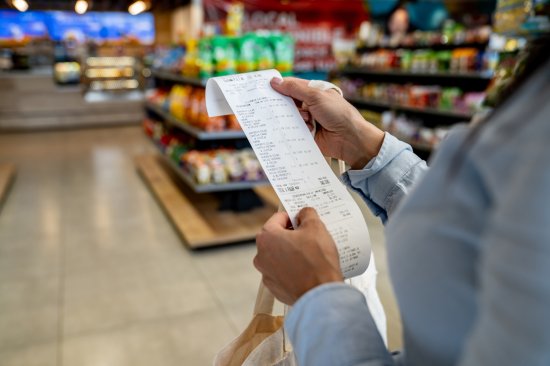
Groceries that are most likely to be affected are those that are hard to produce in the U.S., like coffee, bananas, or cocoa.
On the campaign trail, President-elect Donald Trump spoke of the burden grocery prices were placing on Americans and promised to help bring relief to more households. It’s a vow that may have helped him get elected, but experts say his proposed tariffs could exacerbate the problem.
High prices—and the economy more broadly— were top of mind for most Americans at the ballot box. Shoppers have been faced with record high inflation. The COVID-19 pandemic, combined with global conflicts like the war in Ukraine, caused major supply chain disruptions and higher prices—with grocery store prices in 2024 almost 25% higher than pre-pandemic prices, according to Consumer Price Index data. And 6 in 10 voters who said they were “very concerned” about the economy cast their ballots for Trump, according to an AP VoteCast survey.
[time-brightcove not-tgx=”true”]But experts say that one of Trump’s signature campaign promises— a 10-20% tariff on all imports, with goods from China facing tariffs as high as 60%—could lead to an increase in grocery prices for consumers.
“This is an example of a policy that is almost surely going to backfire,” says David Ortega, food economist and professor at Michigan State University. “Instead of bringing prices down, these tariffs are almost guaranteed to lead to an increase in prices.”
Read More: What Donald Trump’s Win Means for Inflation
Trump has said that he planned to impose tariffs on imported goods and foods to boost American manufacturing and end what he says are unfair trade practices by China. He has said the tariffs will be paid by other countries rather than consumers. “We’re going to be a tariff nation,” he said at a campaign rally in Mosinee, Wi. in September. “It’s not going to be at a cost to you, it’s going to be at a cost to another country.”
However, experts say that consumers might still feel it in the checkout line if Trump’s proposed tariffs go into effect.
“The rule of the law is that the tariff is paid at the border by the importer. Now, that does not mean that the true economic burden is necessarily on the importer,” says Felix Tintelnot, professor of economics at Duke University. Many importers might raise the cost of items in order to offset the tariffs, thus passing the burden on to consumers, says Tintelnot.
An estimate from the Peterson Institute for International Economics found that Trump’s proposed tariffs could cost the average American household $2,600 a year—with tariffs impacting lower-income Americans the hardest. Walmart’s CEO recently told CNBC that the chain might have to raise prices on items if the proposed tariffs go into effect.
Read More: How to Buy Groceries Right Now Without Breaking the Bank
Groceries that are most likely to be affected are those that are hard to grow or produce in most regions of the U.S. and need to be imported, like coffee, bananas, or cocoa.
But tariffs could also affect the price of items produced in the United States, says Ortega, because many domestic manufacturers rely on “intermediary goods” from other countries—like fertilizer, equipment, packaging— in order to produce and manufacture food domestically. “When those products are facing a tariff, that’s a tax, it increases the cost of production, and then that cost gets passed down to the consumer in the form of higher prices,” he says.
And there’s another way tariffs could affect costs for taxpayers: imposing them can provoke other countries to implement retaliatory tariffs. After the first Trump Administration placed a series of tariffs on China in 2018, China retaliated by placing tariffs on soybean imports. The U.S. government compensated for losses with a $28 billion aid package for farmers that relied on taxpayer funding.
Whereas the 2018 tariffs focused on a limited number of goods including washing machines, solar panels, and metals like aluminum and steel, the current tariff proposals are far more widespread—which means consumers might feel the burden more than in 2018. “We can expect larger price effects this time, because many more goods are facing across-the-board tariffs,” says Tintelnot.